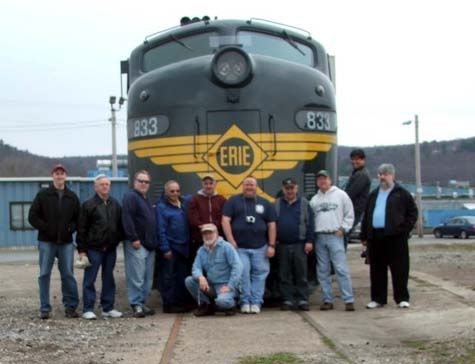
This was a through route for trains from Boston to the west for a
while. The initiating carrier on the transHudson leg was the NY&NE
(later NYNH&H).
They put the trainferry WILLIAM L. HART in service from Fishkill Landing
to Newburgh. Initially the standard gauge cars were carried on dual
gauge rails to some inland junction where the trucks were swapped.
This wasn't like the long stretch dual gauged for the Lehigh Valley
so it could access Buffalo for the few years they didn't have their own
RoW. Prior to the HART there was D&C service that used the FANNY GARNER
which carried through baggage for trains it connected with, but I can't
find mention of Newburgh connectors or transport of cars.
Implicitly it did connect with Erie trains, but perhaps
the Erie didn't quote joint rates or operate through service via of
Newburgh then. That ferry line mentions connecting with New York
and Hudson River RR (NYC) and the New York, Boston & Montreal
in 1873 timetables.
In any case, the New Haven took over the ferry service in 1895, but
I don't know if through pullmans were operated through there then.
Train ferry service of all kinds ended thereat
in 1904, and the NH's Poughkeepsie Bridge was reason for that.
The elimination of the ferry transfer of freight cars also dealt
the branch a serious setback as it eliminated all the through cars,
except the few with NYC's River line (i.e. West Shore).
The road vehicle and passenger ferry between Newburgh and
Beacon didn't die until the interstate highway bridge was built
in the early 1960s.
Good-Luck, PJB
